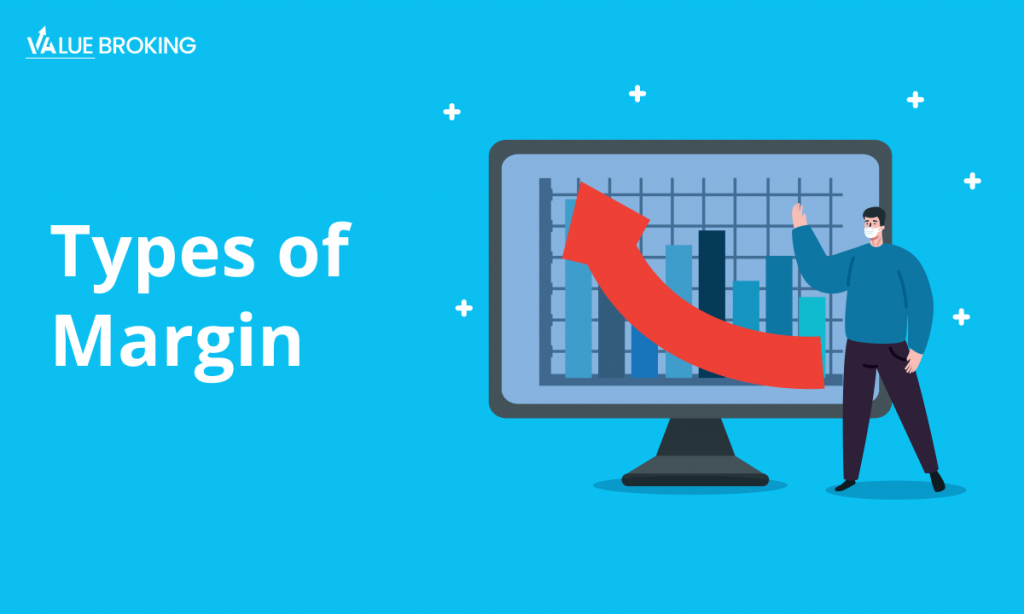Different Types of Margin Explained

Getting well acquainted with some critical stock market terms, including different types of margins, will help you move in the market with ease. To explain the different types of margins, you must understand what is margin first. Margin means borrowing money from a broker to buy an investment. It is entirely different from the total value of the investment and the loan amount. You may be wondering now how many types of margins there are? Gross Exposure Margin, Daily/Initial Margin, Special Margin, Mark to Market Margin, Volatility Margin and Ad-hoc Margin are the six different types of margins.
There was a time when margin calls faced criticism due to the crisis’s deepening. At present, market players understand how much damage can become. It will happen when they can’t chip in additional funds in the form of margin. In this way, it is easy to support multiple positions in the market.
It is essential to pay different types of margins as per the surveillance system of Indian stock exchanges. Both brokers and clients can safeguard against a payment crisis during a volatile market by paying margins.
In the F&O segment, you can create significant speculative positions on initial and additional margins. This payment is a part of the total transaction cost. It will depend upon the market trend.
Table of Contents
Types of Margins
Here are various types of margins in the stock market.
Gross Exposure Margin
You can gross exposure margin on daily significant positions for every stock in the market. Brokers will have to collect security as cash or bank guarantee to avoid default for the positions a trader goes for on the given day.
Daily/Initial Margin
At each trading day’s end, brokers will collect margin payable against open positions from its users. These open positions can be on the buy-side or the sell-side. Daily margins are helpful to avoid eventualities taking between two trading days. While trading in derivatives, you must put an initial margin before opening the Futures transaction’s day when buying or selling. The calculation of margins depends on the changes that occur in it.
Special Margin
You need to pay exceptional margins on stocks that undergo abnormal share price or volume movement. It is almost like a surveillance measure used for checking out speculative activity in a particular scrip. For example, at the Bombay Stock Exchange (BSE), there will be a margin of 25% or 50%. But, essentially, it is dependent upon the sharp movement of share price or volume.
Mark to Market Margin
Mark to market margin means the amount of difference you need to pay whether you buy or sell. For example, you need to make payments when there is a plunge in the market price below the transaction price or an increase above the transaction price. The calculation of margins depends on the difference between a particular day’s close and the previous day’s close. You can find it in F&O mostly.
Volatility Margin
The volatility margin helps understand abnormal intraday fluctuations in a scrip. You must honor your commitments during tremendous volatility in share prices when buying or selling. The calculation of the volatility margin depends upon the difference between the highest and lowest prices over a 45-day transaction cycle, where there will be a comparison with the lowest price. You need to pay the margin as cash or shares in your Demat account.
Ad-hoc Margin
The Ad-hoc margin is a SEBI-prescribed margin. Brokers have to pay Ad-hoc margins for significant positions overall. They apply to certain low-priced stocks that come with illiquidity.
The Logic of Charging Margins in Equity Trades
The system of margin brings the assurance of enough resources available for traders. With enough resources, you can fulfill your obligations. The prices of futures are volatile. There is a possibility of more than one margin call each day. It is the responsibility of the futures exchange to decide margin requirements. There will be an increase in margin requirements when the volatile market prices. Thus, it is like dealing with the added risk of daily price fluctuations in the market. The adjustment of margin requirements to trade lower and reflect the lower risk during volatility fall in a particular market.
Interest and Penalty on Margins
Margin interest means the interest applicable on loans between you and your broker, depending upon your investments. For example, a short sale of stock requires borrowing first on margin. After that, you have to sell it to a buyer. While buying on margin allows you to avail of leverage strategies which means buying more shares than with limited cash.
Although the accumulation of margin interest happens daily, you will have to pay for it monthly. To compute the daily interest rate, the settled margin debit balance is multiplied by the annual interest rate while dividing the outcome by 360. The debit balance amount helps know the annual interest rate on a specific day.
SEBI imposes a margin shortfall penalty on a trade without the following factors.
- Sufficient margin (SPAN & Exposure for the F n O segment, while VAR+ELM+Adhoc for the Equity segment
- Net buy premium
- Physical delivery margins
- marked-to-market losses, depending on the exchange
The penalty will be in the form of a percentage of the shortfall amount. It can get reflected in the narration “Being CFX/F&O/MCX/Equity Margin Penalty Charges for the Trade Date”. You can see it in your ledger.
Conclusion
The stock exchange collects a wide range of margins, from gross exposure margin to Ad-hoc margin. Moreover, margins apply not only to buyers and sellers and to brokers. Thus, it is essential to understand the concept of margins along with their different types to trade wisely in the stock market.